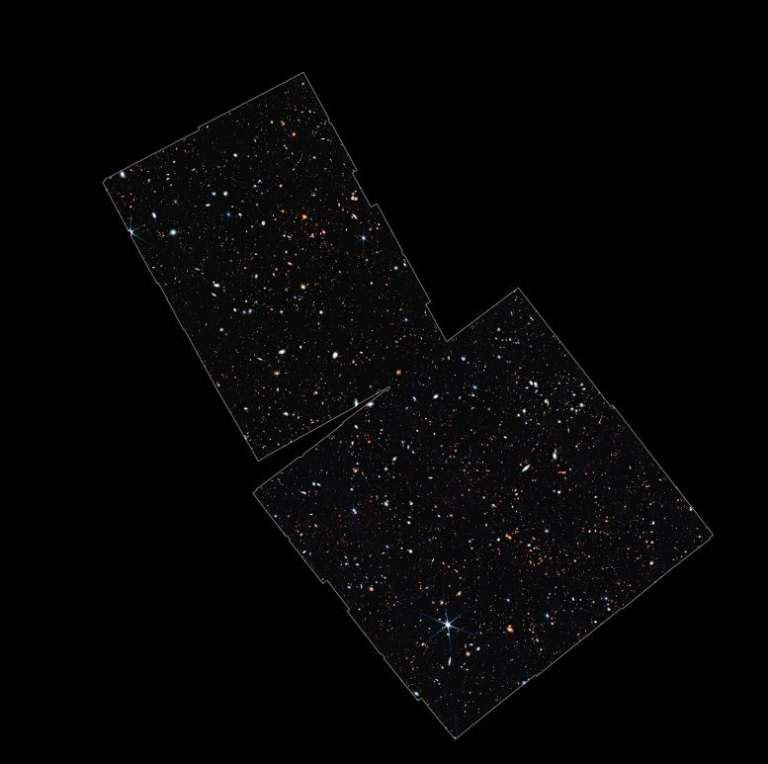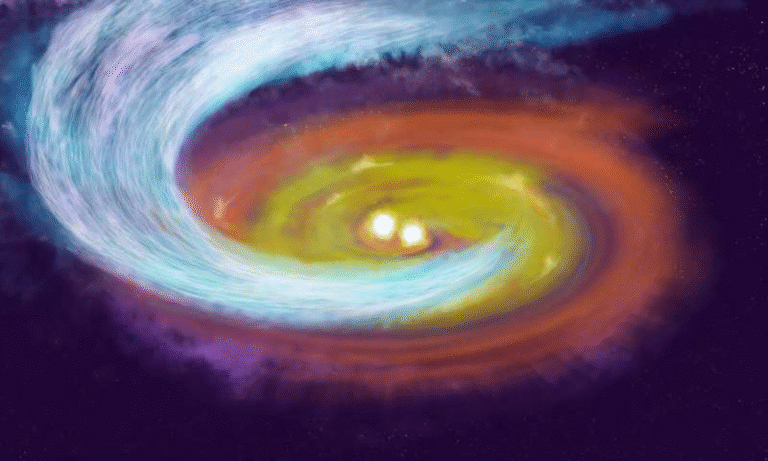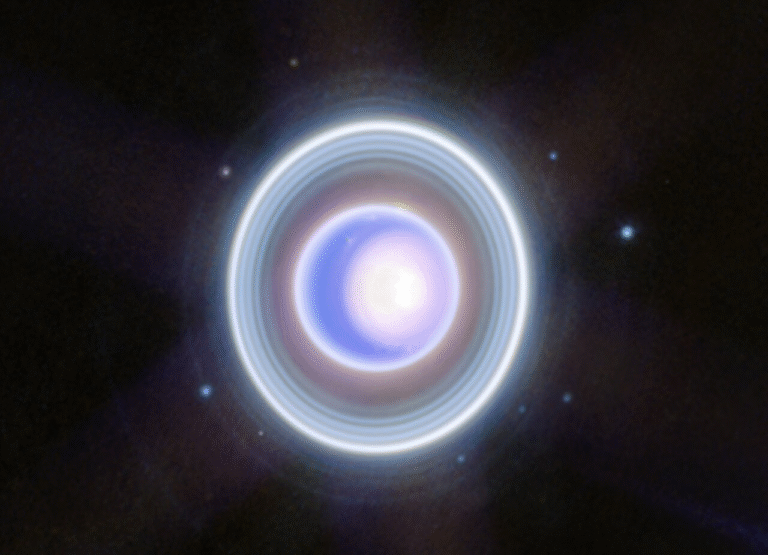New Evidence Suggests Mars Once Had a Massive Northern Ocean

For decades, scientists have debated whether Mars—now a cold, dusty world—once held a vast ocean covering much of its northern hemisphere. The latest research from the University of Arkansas has added strong geological evidence to this enduring mystery, suggesting that large Martian rivers once flowed into an ocean billions of years ago.
The study, led by Cory Hughes, a Ph.D. student in geosciences, and John Shaw, an associate professor at the University of Arkansas, analyzed features on Mars that closely resemble those formed by rivers and deltas on Earth. Their findings were published in Geophysical Research Letters in June 2025.
The Search for Mars’ Ancient Ocean
Scientists already agree that Mars once had flowing liquid water on its surface. Numerous channels, valleys, and delta-like formations spotted from orbit point to a wetter past. However, whether those rivers ever emptied into a true ocean has remained an open question.
The University of Arkansas team sought to find out by studying how ancient rivers behave when they meet large standing bodies of water. On Earth, when a river slows down near the ocean, its flow drops in velocity, forcing it to deposit the sediment it carries—sand, silt, and clay—creating a delta. Over time, these processes leave behind distinct geological signatures that scientists can recognize even after millions of years.
When Hughes looked at satellite imagery of Mars, he noticed similar patterns: long, tapering channels that appeared to narrow near the ends—just like Earth’s rivers do when they approach an ocean. This detail turned out to be critical.
Understanding the “Backwater Zone”
One of the key concepts in the study is what geologists call the backwater zone. On Earth, this is the region where a river’s flow slows as it nears the ocean or a large lake. For example, on the Mississippi River, the backwater zone begins around 230 miles inland, near Baton Rouge, long before the river reaches the Gulf of Mexico.
In this zone, the river’s ability to carry sediment diminishes. As a result, sand and silt settle, forming thick deposits that shape the river’s delta and nearby landscape. Because of this sediment buildup, the river stops wandering widely from side to side—the channel belt (the area the river meanders within) becomes narrower.
The researchers found the same kind of narrowing in Martian channels, indicating that those rivers also encountered a large standing body of water—likely an ocean that once spread across Mars’ northern lowlands.
This discovery is particularly intriguing because these backwater zones were visible from orbit. It means the geological processes that shaped those Martian deltas were happening on a massive scale, leaving features that are still visible billions of years later.
Rivers That Built Deltas—And Then Disappeared
The Martian river deltas identified by the research team are not just minor channels. They are large and mature, suggesting that they were active for a long time and carried a significant amount of water. Such large-scale river activity supports the idea that the northern hemisphere of Mars was once home to an ancient ocean, possibly as extensive as the Arctic Ocean on Earth.
When those rivers finally dried up, they left behind patterns and ridges that tell the story of how they once moved. To confirm this, the researchers turned their attention back to Earth—to a formation surprisingly close to home.
Lessons from Earth: The Wedington Sandstone
In Northwest Arkansas, there’s a rock formation known as the Wedington Sandstone, dating back roughly 300 million years. It formed from an ancient river system that once flowed from what’s now Indiana into a sea covering central Arkansas.
Hughes and Shaw visited these sandstone cliffs and realized they were looking at a branching network of inverted ridges—meaning the old riverbeds had become raised features over time. This happens through a process known as topographic inversion.
On Earth, when a river dries up, the coarse sediments that once lined its bottom can harden into sandstone. Over millions of years, erosion removes the softer materials around it, leaving the tougher sandstone as ridges where the river used to be. Mars lacks tectonic plate movement, so its inverted ridges likely formed when wind erosion stripped away surrounding material.
By comparing the inverted ridges on Earth with those on Mars, the researchers could see clear similarities. This gave them a rare real-world analogue for understanding Martian landscapes. Interestingly, the Wedington Sandstone is believed to be the only known example of an inverted river delta on Earth—making it an ideal case study for what Mars’ ancient deltas might look like.
A Geological Breakthrough
The presence of inverted ridges and long backwater zones on Mars provides one of the strongest pieces of evidence yet that large rivers once drained into an ocean. These findings help bridge the gap between Earth and Mars, showing that the same natural processes that shape our planet’s deltas also operated on Mars long ago.
If Mars did have a vast ocean in its northern hemisphere, that would mean enormous volumes of water once existed on the planet’s surface. And since liquid water is essential for life, this greatly boosts the possibility that Mars could once have supported microbial life.
Even though no signs of life have yet been found, this discovery provides scientists with new areas to target in future missions—especially river deltas and coastal zones that may have trapped organic material.
How Scientists Detect Ancient Water Systems
To identify ancient river systems on another planet, scientists rely on orbital imagery, radar, and comparisons with known Earth formations. They look for structures like channel belts, deltas, and sedimentary layers that match the hydrological patterns seen in terrestrial rivers.
The Mars study used high-resolution orbital data to measure channel widths and shapes. By comparing these with measurements of Earth’s river deltas—such as the Mississippi and Ganges—the team calculated how Martian channels narrowed near their endpoints, consistent with where a river would meet a large body of water.
The distances involved were significant. The backwater zones on Mars extended 5 to 17 kilometers upstream, perfectly in line with expectations for rivers that once emptied into a large ocean or sea.
Other Evidence for a Martian Ocean
The Arkansas study isn’t the only piece of the puzzle. Multiple recent findings from other missions also point toward the existence of a northern ocean on Mars.
In 2025, China’s Zhurong rover detected what appear to be buried shoreline deposits in Utopia Planitia, one of Mars’ northern basins. Using ground-penetrating radar, the rover found sloping sand layers between 10 and 35 meters below the surface. These inclined layers are similar to those found in beach environments on Earth, where waves and tides push sediment toward the shore.
Researchers suggested these could be remnants of ancient beaches formed around 3.5 to 4 billion years ago, possibly along the edges of an ocean called Deuteronilus. Because these deposits are buried under about 80 meters of material, they’ve been shielded from erosion and remain remarkably well preserved.
This discovery aligns perfectly with the Arkansas team’s findings. If Mars had beaches and river deltas at the same time, it strengthens the case for a large, stable ocean that persisted long enough to shape the landscape.
What About Earlier Theories?
The idea of an ocean in Mars’ northern lowlands—known as Oceanus Borealis—isn’t new. Scientists proposed it decades ago, but evidence was always ambiguous. Some thought the planet’s supposed “shorelines” might just be erosion patterns or lava flows. Others argued that any real coastlines would have been destroyed by billions of years of impacts and geological change.
Even today, many planetary geologists remain cautious. Mars’ surface has been heavily reshaped over time, and the absence of plate tectonics means erosion and impact craters can easily distort or erase ancient features. Still, the consistency of new data—from river patterns to buried beaches—makes the ocean theory harder to dismiss.
Why This Discovery Matters
If Mars truly had an ocean, it means its climate was once very different. To sustain such a body of water, the planet would have needed a thicker atmosphere and warmer conditions—perhaps supported by volcanic activity or a stronger greenhouse effect billions of years ago.
This has huge implications for understanding how planets evolve. It suggests that Mars might have followed a trajectory similar to Earth’s early history before cooling and drying out.
From a habitability standpoint, deltas and shallow coastal regions are particularly exciting. On Earth, such areas teem with life and preserve organic material exceptionally well. Future Mars missions could target these specific regions to look for biosignatures—chemical or physical traces of past life.
Remaining Mysteries
Despite the mounting evidence, scientists still have unanswered questions:
- How deep and vast was this ocean?
- How long did it last before Mars lost its atmosphere?
- Where did all that water go?
Some studies suggest that much of Mars’ water escaped into space as the planet’s magnetic field weakened. Others propose that a significant portion might still be locked underground or frozen beneath the surface.
New missions, improved radar systems, and perhaps eventual drilling efforts could help settle these questions once and for all.
A Step Closer to Understanding Mars
The discovery by Hughes and his colleagues doesn’t just reshape our image of Mars—it also deepens our understanding of planetary geology as a whole. By comparing Earth’s and Mars’ geological histories, scientists can better predict how planets evolve, lose water, and potentially support life.
What began as a simple comparison between sandstone formations in Arkansas and Martian landscapes has turned into some of the strongest evidence yet that Mars once had rivers flowing into a vast ocean.
It’s another reminder that even in a quiet corner of Earth, the rocks beneath our feet can help us read the history of another world.
Research Reference:
Stratigraphic Evidence of Backwater Morphodynamics and Lowland River Deltas in the Northern Hemisphere of Mars (Geophysical Research Letters, 2025)





